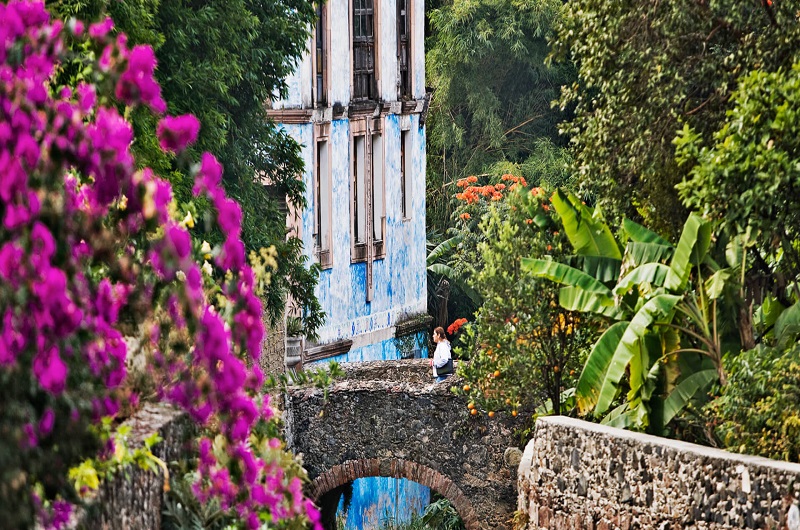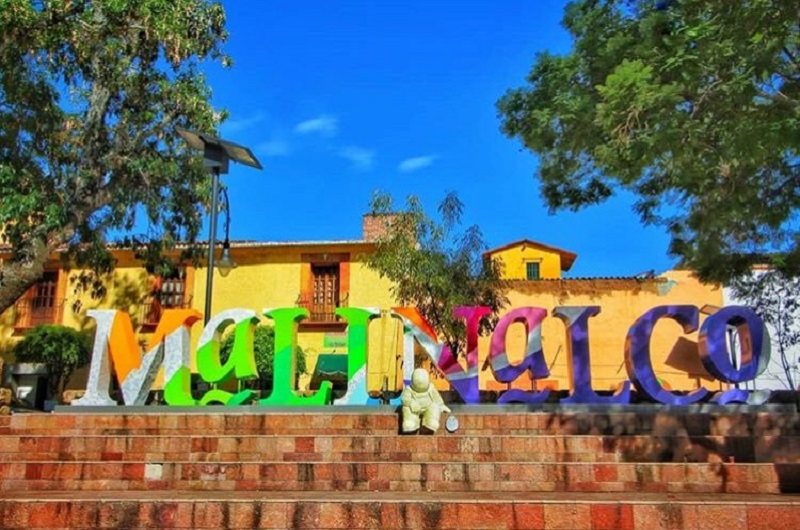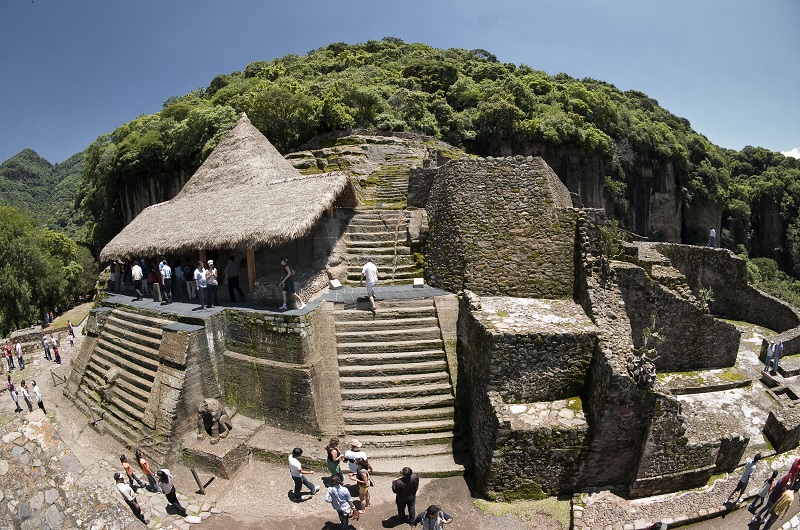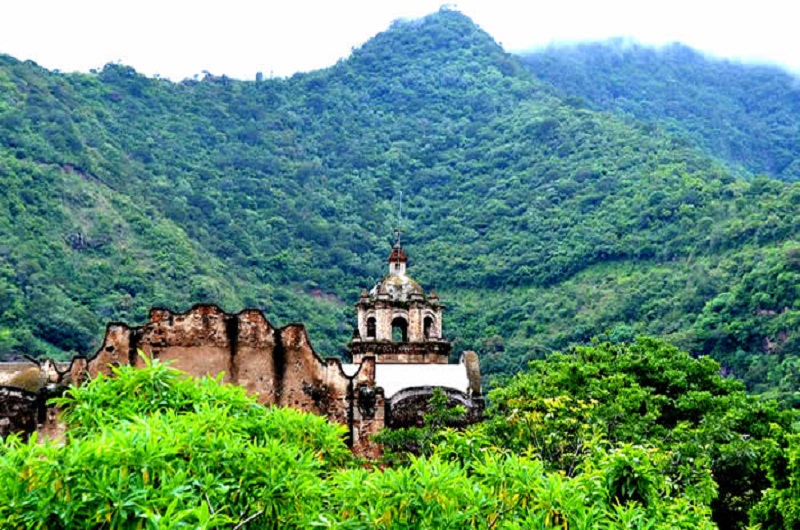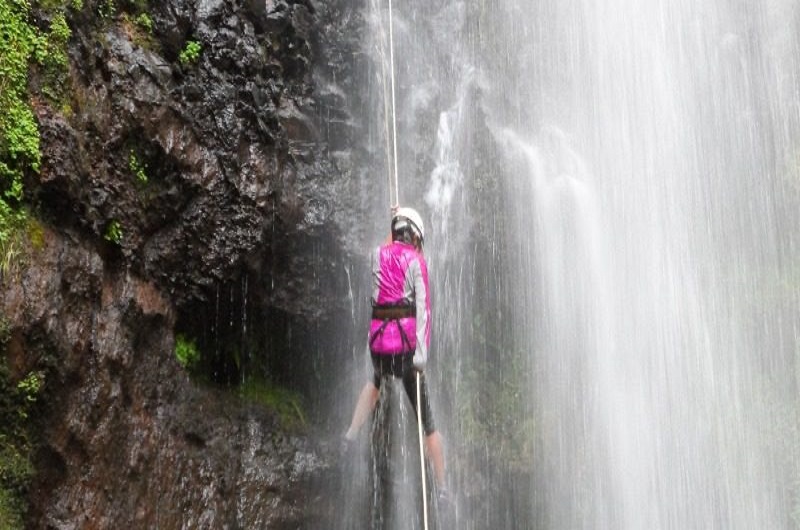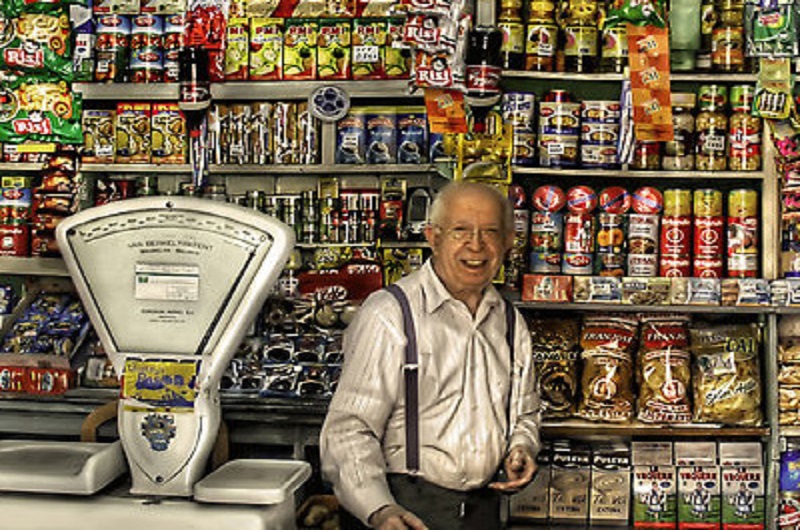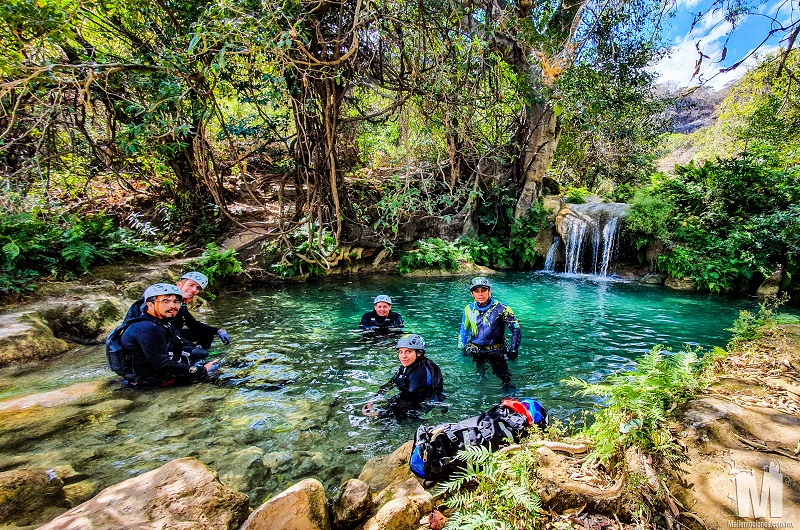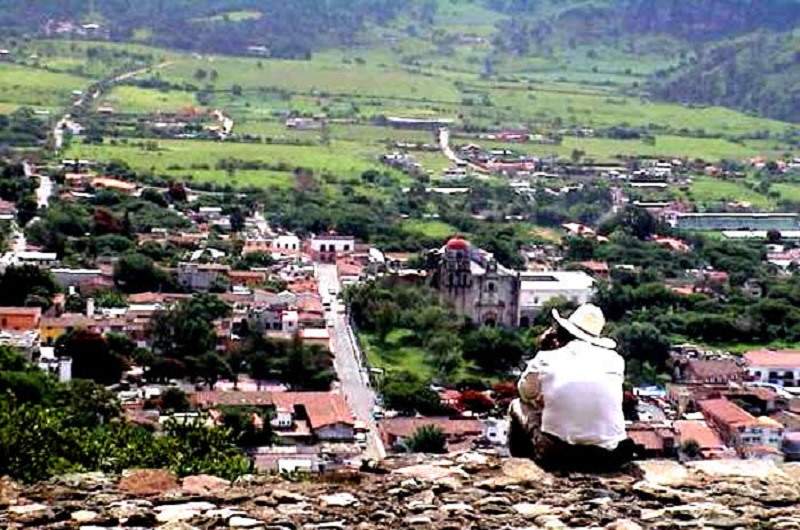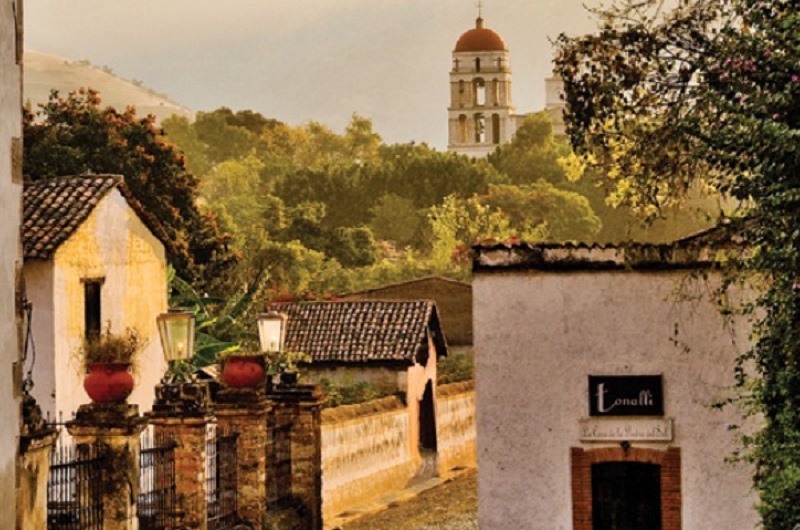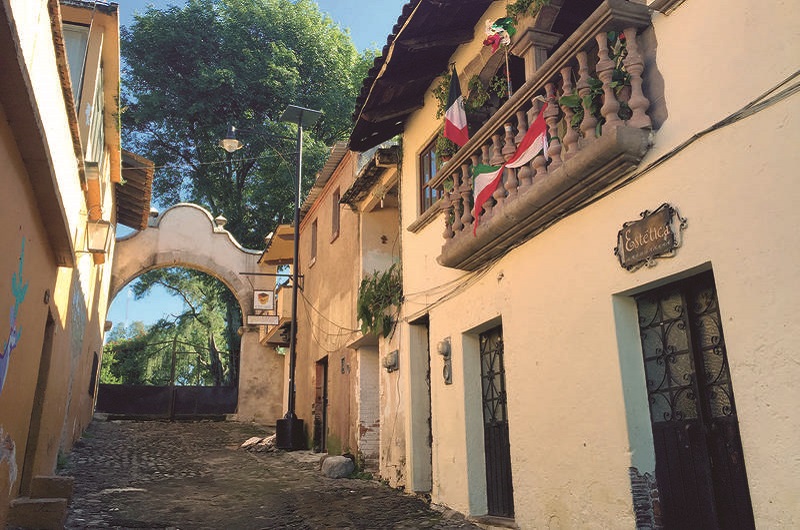Malinalco Mágico – Mágico and adventure romance
Wednesday every week not the famous Tianguis that come from pre-Hispanic life. Here you can find everything from handicrafts, clay utensils, leather goods, stones, carved wood and handmade tortillas.
In addition, around the kiosk you will find the famous loom scarves, seed and wooden jewelry. There are also several galleries where you can purchase works of art like that of Andrés Medina.
➢ Visit the center
The center undoubtedly has a special charm: the streets have the taste of the province, the orchards and the colonial houses. In the gardens you can find lush mango, avocado, plum, pear and many other fruits that are sometimes sold in the local market on Wednesdays.
➢ Divino Salvador Parish and Ex Augustinian Convent
At first glance, it is reminiscent of medieval buildings due to its rough and rustic walls, sober decoration and square columns. Inside, however, you can see one of the first artistic examples of cultural errors. The monastery was built in 1543 by the Augustinian order together with the temple of the divine savior. The facade is in the Plateresque style, very simple, but the cloister is home to beautiful and unique murals made by local artists.
Malinalco Mágico – Mágico and adventure romance
➢ Cuauhtinchán Ceremonial Center
It is located in the Cerro de los Ídolos (after a path of about 400 steps) and was discovered in 1933. The Cuauhcalli main building or Casa de las Águilas is known worldwide for its monolithic character made of living stone. Warriors used to go to the place to perform initiation rites. In the temple, you will appreciate the impressive sculptures of two eagles and an sprawling jaguar that are beautifully carved. Behind one of the eagles is a cuauhxicalli, or sacred vessel, in which the hearts of the victims were placed. A special feature of the sanctuary prior to its remodeling was its orientation and relationship to the movement of the stars, resulting in light phenomena that could be observed during the summer solstice at noon.
➢ Dr. Luis Mario Schneider University Museum
Doctor Luis Mario Schneider, an Argentine humanist in love with the magic of Malinalco, founded this museum which he bequeathed to the people when he died. Pre-Hispanic pieces from the various cultures settled in the state of Mexico are on display here (such as the statue of the god Ehécatl in Cerro de los Ídolos), as well as examples of herbalism practiced by the ancient residents and a botanical garden. Among the sacred plants is the Malinalli, which gives the community its name and has been associated with death.
➢ House of Culture
In the middle in front of the City Palace is also the Malinalco House of Culture, which permanently invites you to visit the exhibition of admirable replicas of wall paintings from the archaeological zone and photographs of pre-Hispanic remains. In addition, you can enjoy cultural events, dancing and exhibitions.
➢ Tlakuikani Gallery
If you want to experience the modern artistic expressions of the creators of the community and the state of Mexico, check out this gallery in the Santa María Norte neighborhood. Tlakuikani offers the exhibition and sale of oil paintings of masks and wood-carved objects of ahuehuetes, teponaztlis and rain powder. You are unlikely to go empty-handed.
➢ Los Bichos de Malinalco living museum
Here you can appreciate the great biodiversity of the region. In addition to various strange facts, you can see praying mantises, tarantulas, and snakes.
Malinalco Mágico – Mágico and adventure romance
➢ Malinalco Prehipanic Gastrotour
It is a journey of about five hours during which you can have an experience connected to our past. It includes a tour of the Augustinian Monastery, a market tour to buy local ingredients, and an expert-led cooking class.
➢ Chalma
This city is home to the Señor de Chalma sanctuary , which is highly venerated and considered to be wonderful. The sanctuary was founded in the 16th century and has a neoclassical facade. Traditionally, pilgrims visiting it for the first time acquire a crown of flowers to wear while dancing until they reach the sanctuary.
➢ Tenancingo
This city is known for the craftsmanship of its scarves. In the center of the city are the traditional kiosk, the parish and the city palace. In addition to the cloths, the chairs painted with floral motifs, the typical "bishop's dish" (sausage made from pork) and the Thursday and Sunday market days stand out. Here you can visit the Capilla del Calvario, built in the 19th century and decorated by the local painter Petronilo Monroy.
➢ Do adventure sports?
If adrenaline rush is your thing, the seemingly peaceful Malinalco has several unparalleled options. From paragliding to climbing and from canyoning to mountain biking, you can literally see the world from every angle here.
➢ In restaurants
Malinalco Mágico Mágico and adventure romance
Either "Malinalco-style" trout in the "Las truchas" area, bread from wood-fired ovens (such as powders, bolillos, wigs and bows) for sale in the market, pineapple juice with picket lines, lamb grill, sapote-snow negro or even exotic meat ( like Opossum) - Malinalco's gastronomic offer is a pleasure for all the senses.
➢ Xalapa
The capital of Veracruz is a cheerful, calm and elegant city. Here you'll see the 17th-century cathedral, the pink stone government palace with murals by Mario Orozco Rivera, and the Church of San José. These are other important things
➢ Xalapa Anthropology Museum, Berros Park and a good coffee.
Cerro de las Culebras viewpoint
Malinalco Mágico – » The future of touring, is Habibi Word Travel & Tour
It is a natural nature reserve which, in addition to rich flora and fauna, offers a fantastic panorama of Coatepec.
create your Perfect Vacation, together with them.
Malinalco Mágico – Mágico and adventure romance
Malinalco, mystical place in the state of Mexico
Tour Duration:
The price depends on your wishes, as well as hotel choice, visits. We therefore ask you to provide details when booking. So we can start putting together an offer for you.
Price: US Dollar $ request
per person
